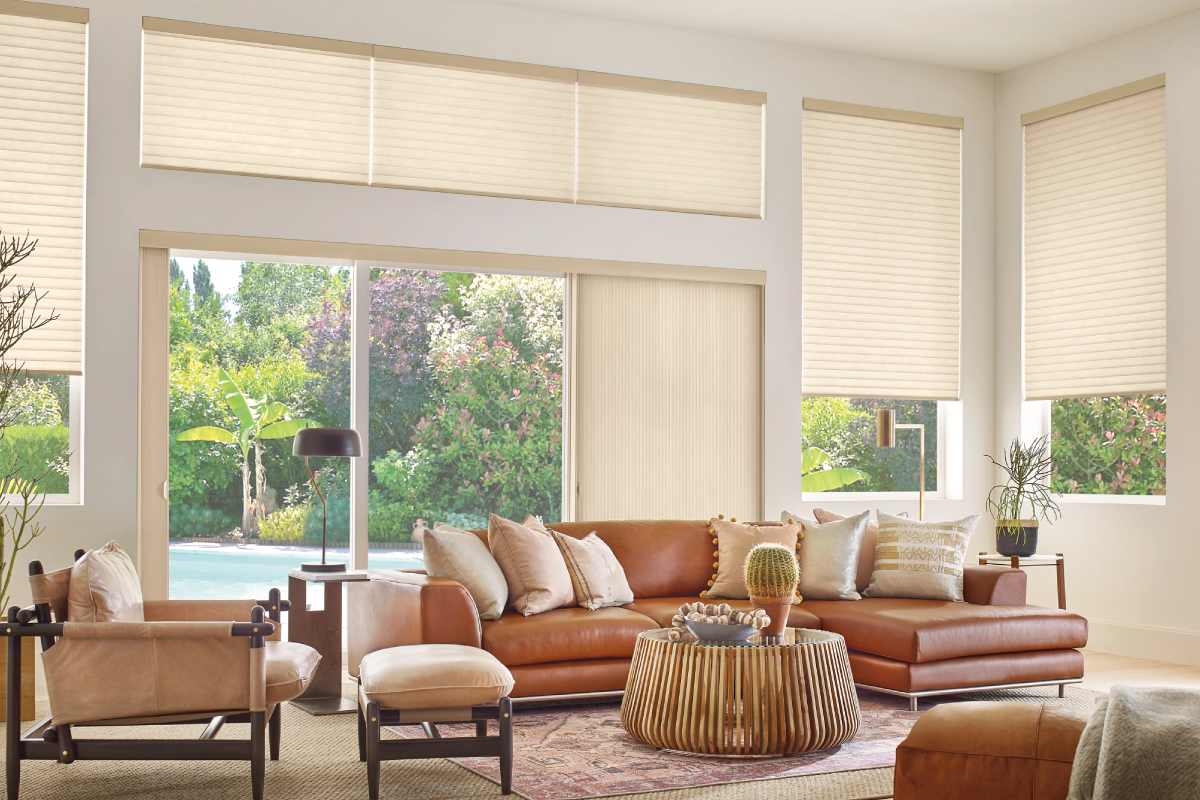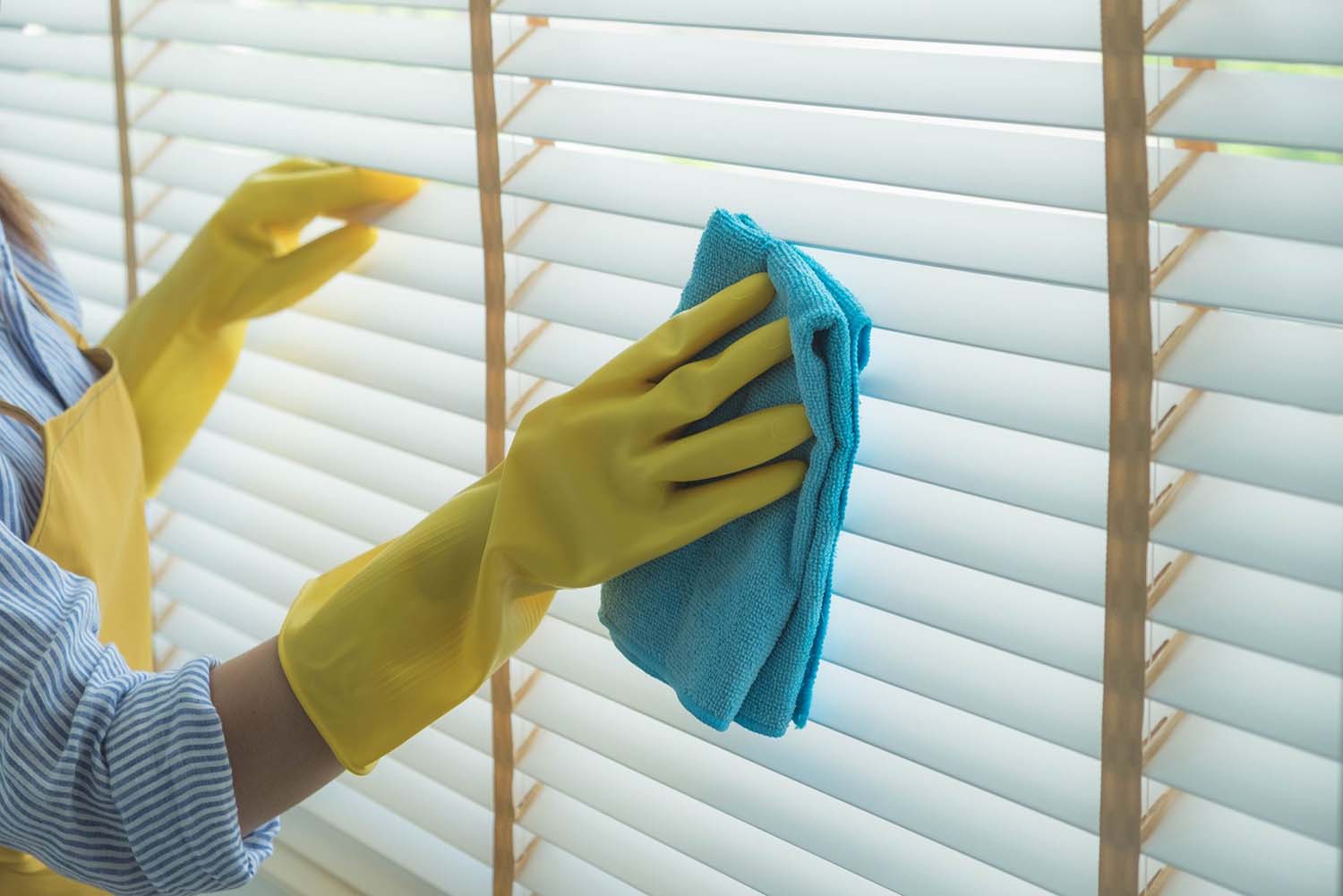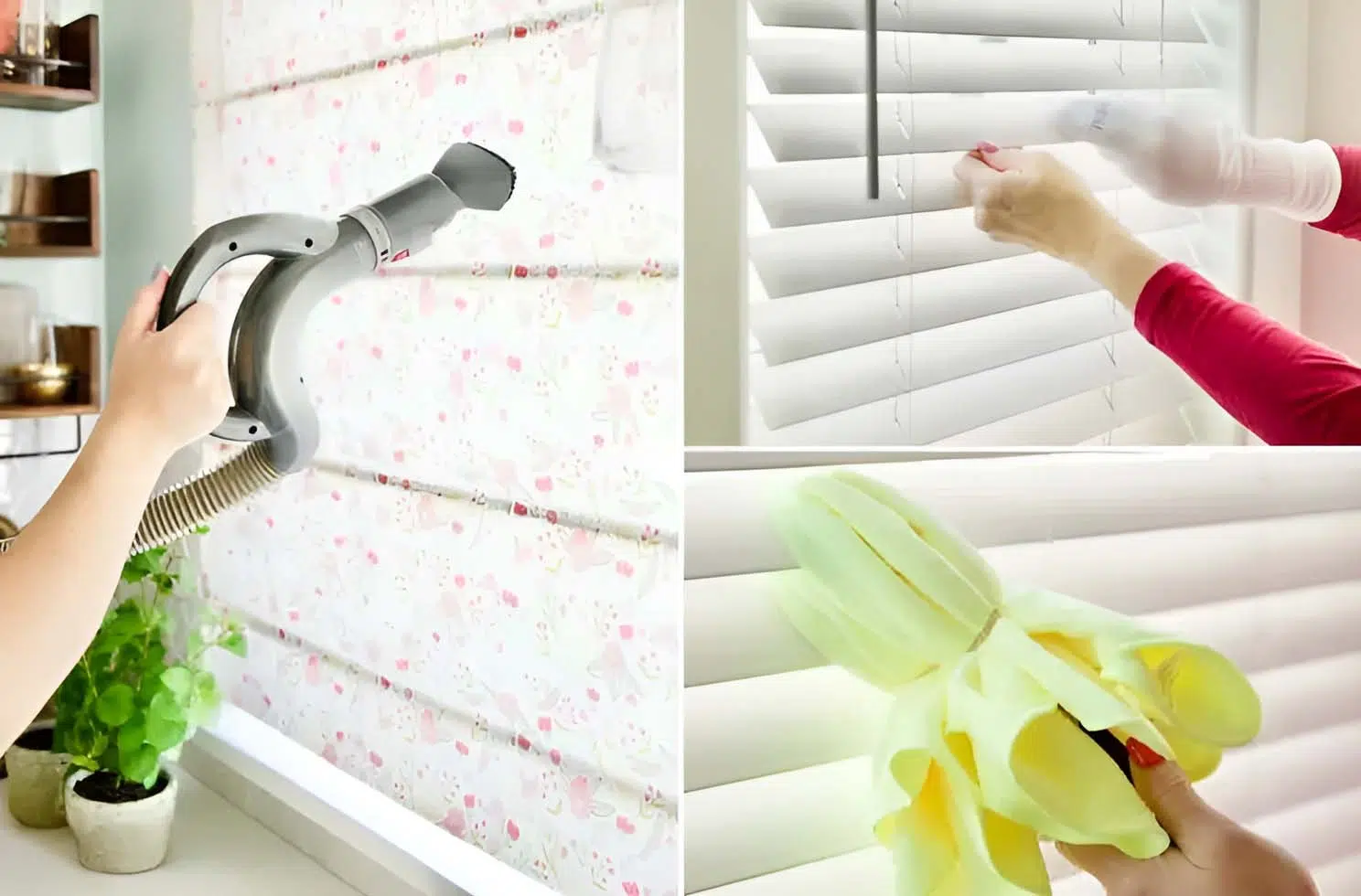Blinds and shades are essential to any home, providing privacy, light control, and style. However, like any home furnishings, they require regular cleaning and maintenance to look their best and function optimally. Dust, dirt, and allergens can build up on your window treatments over time, affecting both appearance and air quality. Luckily, cleaning your blinds and shades doesn’t have to be a daunting task. In this guide, we’ll go over effective ways to clean and maintain different types of blinds and shades, ensuring they stay in top condition year-round.

Dusting Your Blinds and Shades: The First Step in Regular Maintenance
Regular dusting is one of the easiest and most effective ways to keep your blinds clean. A quick dusting every couple of weeks prevents dust and dirt from building up, making deep cleaning less frequent and more manageable.
To dust your blinds, simply close them and use a microfiber cloth, duster, or vacuum cleaner with a brush attachment to remove any dust from the slats. For horizontal blinds, start at the top and work your way down to prevent dust from resettling on already cleaned areas. For vertical blinds, start from one side and work your way across.
Pro Tip: Dust your blinds weekly to keep them looking fresh and avoid buildup. This small effort goes a long way in extending the lifespan of your blinds.
Spot-Cleaning Stains on Fabric Blinds and Shades
If you have fabric shades like Roman or cellular shades, it’s common to encounter small stains or spots from accidental spills or splashes. Spot-cleaning is a safe way to remove these blemishes without damaging the fabric. To spot-clean, use a clean, damp cloth and a mild soap solution. Gently dab (do not rub) the stain until it lifts. Be cautious not to oversaturate the fabric, as too much water can lead to discoloration or watermarks.
Avoid using harsh chemicals or abrasive cleaning tools on fabric shades, as these can damage the fabric and weaken its structure. If your fabric shades are delicate, consider testing a small, inconspicuous area first.
Need fabric shades that are easy to maintain?
Check out our collection for high-quality, durable options!
Cleaning Faux Wood and Vinyl Blinds
Faux wood and vinyl blinds are popular choices for their durability and easy maintenance. These materials can handle more rigorous cleaning than real wood, making them ideal for high-traffic areas like kitchens and bathrooms where blinds are exposed to moisture and grime.
To clean faux wood or vinyl blinds, mix a small amount of mild dish soap with warm water in a bowl. Use a soft cloth or sponge to wipe down each slat, focusing on any areas with buildup. Rinse the cloth as needed to avoid spreading dirt, and follow up with a dry cloth to prevent water spots.
For a deeper clean, you can also take down the blinds and soak them in a tub of soapy water. After soaking, rinse each slat with clean water and dry them thoroughly before rehanging.
Explore our low-maintenance faux wood and vinyl blinds
Ideal for any room in your home!
Handling Delicate Wood Blinds and Shades
Wood blinds bring warmth and sophistication to any space, but they require a bit more care than faux wood or vinyl. Excess moisture can warp or damage wood blinds, so it’s essential to use dry cleaning methods whenever possible.
To clean wood blinds, dust them with a microfiber cloth or a vacuum brush attachment. If you need to remove fingerprints or other marks, use a slightly damp cloth with a drop of wood-safe cleaner. Avoid soaking the cloth, as too much moisture can damage the wood finish. Finish by wiping with a dry cloth.
For regular maintenance, consider using a wood polish to keep the blinds looking polished and fresh. However, be cautious with any products containing harsh chemicals or alcohol, as these can strip the wood’s finish.

Removing Dust and Allergens from Cellular Shades
Cellular shades, also known as honeycomb shades, are a favorite for their energy efficiency and insulation properties. However, their unique design can make cleaning a bit tricky, as dust and allergens can settle within the cells. Fortunately, there are effective ways to keep them clean.
The best way to clean cellular shades is by using a vacuum cleaner with a soft brush attachment. Gently run the brush over the shades, paying extra attention to the folds where dust can accumulate. For stubborn dirt, a dry sponge or cloth can help lift debris without damaging the shade material.
Avoid soaking or washing cellular shades, as water can damage the delicate honeycomb structure. If necessary, consider professional cleaning services for a deep clean without risking damage.
Interested in easy-to-clean cellular shades?
Check out our collection for low-maintenance, high-quality options!
Dealing with Stubborn Dust on Vertical Blinds and Shades
Vertical blinds, whether made of fabric, vinyl, or aluminum, are a practical choice for large windows or sliding doors. However, their length and vertical orientation can make them prone to dust accumulation, especially near the bottom.
To clean vertical blinds, start by dusting with a microfiber cloth or vacuuming with a brush attachment. For vinyl or aluminum blinds, you can use a mild soap and water solution to wipe down each slat individually. Avoid harsh scrubbing, as this can damage the material or cause streaks.
For fabric vertical blinds, spot-clean stains with a damp cloth and mild detergent. If they need a more thorough cleaning, some fabric vertical blinds are machine washable, but be sure to check the care instructions first.
Pro Tip: When dusting vertical blinds, close them in one direction and dust each slat, then reverse the direction and repeat. This ensures every surface is cleaned evenly.
Preventive Maintenance Tips for Long-Lasting Blinds and Shades
In addition to regular cleaning, there are a few preventive maintenance tips that can help extend the life of your blinds and shades:
- Avoid harsh sunlight: Prolonged exposure to direct sunlight can cause fading or warping. Consider adding a UV-protective film to your windows or using sheer curtains to protect your blinds from sun damage.
- Check for loose parts: Blinds and shades often have small parts like cords, brackets, and clips. Regularly inspect these components to ensure everything is secure, as loose parts can affect the operation of your window treatments.
- Clean cords and pull mechanisms: Dust and dirt can build up on cords and pull mechanisms, making them stiff and difficult to use. Wipe them down with a damp cloth periodically to keep them functioning smoothly.
- Rotate blinds occasionally: For horizontal blinds, consider occasionally rotating the slats when closed to avoid uneven wear from sunlight or dust.

When to Seek Professional Help
For deep cleaning or stains that don’t respond to regular cleaning methods, professional cleaning services can be a valuable resource. Many professional cleaners specialize in blinds and shades and use gentle, effective methods to clean delicate materials. They can handle challenging stains, thoroughly remove allergens, and extend the lifespan of your blinds with careful treatment.
For fabric shades, particularly large or high-end models, professional cleaning may be the best way to maintain their appearance and functionality without risking damage.
Want blinds that are easy to maintain?
Explore our selection of durable, low-maintenance options for every room in your home!
Keep Your Blinds and Shades Looking Their Best
With regular cleaning and a few preventive steps, your blinds and shades can stay looking fresh and beautiful for years to come. Whether you’re dealing with dust on wood blinds, stains on fabric shades, or everyday maintenance for vinyl blinds, these tips make it easy to maintain your window treatments. Not only does regular upkeep improve the appearance of your home, but it also helps ensure your blinds and shades remain functional and durable over time.
Curtains Versus Blinds: Which is the Better Choice? - Blindall
[…] are known for being easy to clean and maintain, which is a significant advantage in the curtains versus blinds comparison. Most blinds only need a […]